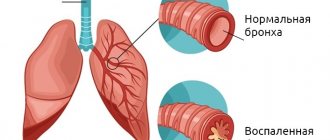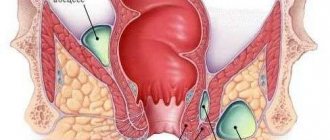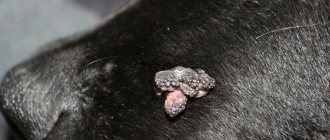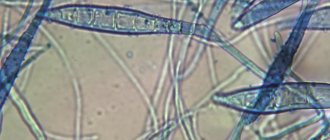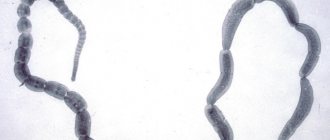In dogs, 3 types of pathogens contribute to the development of staphylococcal infections:
- Staphylococcus intermedius;
- Staphylococcus pseudintermedius;
- Staphylococcus aureus.
Staphylococcus intermedius and pseudointermedius are the most common causative agents of infection in canines. Aureus bacteria, which cause Staphylococcus aureus in dogs, account for less than 5% of cases of the disease.
What to do in such a situation? To get started, we recommend reading this article. This article describes in detail methods of controlling parasites. We also recommend that you consult a specialist. Read the article >>>
Pathogens that enter the environment from skin or fur remain viable for several months.
What contributes to the development of staphylococcus in dogs?
The cause of the development of staphylococcus in dogs can be any disorder in the body that leads to a decrease in protective forces, for example:
- poor nutrition with minimal vitamin content;
- damage to the skin and/or mucous membranes;
- liver dysfunction;
- high levels of sugar in the bloodstream;
- internal and external parasites;
- past illnesses;
- hormonal changes.
If staphylococcus develops independently, it is called primary. If it is a consequence of another disorder, then they speak of a secondary form.
Causes
Staphylococcus is ubiquitous on the skin of dogs, but animals with strong immunity are protected from the disease. In order for a dog to develop a staphylococcal infection, a kind of push is needed, which can be the following factors:
- Diabetes;
- Hormonal dysfunction;
- Poor diet, the animal does not receive enough nutrients;
- Tick bite;
- Demodectic mange;
- Allergic reactions;
- Worm infestation;
- Skin injuries;
- Flea dermatitis;
- Genetic predisposition of some breeds.
Symptoms of staphylococcus in dogs
At the very beginning of infection, the symptoms of staphylococcus are concentrated on the skin or mucous membranes. These include:
- round spots of pinkish or red color;
- pus;
- hair loss in the area of the spots;
- severe itching;
- bleeding of damaged areas (the pet chews the spots due to severe itching);
- boils (when bacteria penetrate into the deep layers).
Staphylococcus aureus is especially dangerous - in addition to the above symptoms, it causes disruption of the gastrointestinal tract. The clinical picture manifests itself in vomiting, intestinal upset, and rapid onset of dehydration.
Symptoms
The main sign of the development of a staphylococcal infection is the appearance on the dog’s skin of rounded bumps with purulent contents or spots similar to ringworm. They are surrounded by a crust, and there is no wool inside them.
The formations are accompanied by severe itching and pain when pressed. A sick dog shows anxiety, bites into wounds, and scratches them. This provokes further spread of the infection.
Dermatitis, or pyoderma, characteristic of infection with staphylococcus, is classified depending on the depth of damage to the dermis. Highlight:
- Superficial pyoderma. Only affects the upper epidermal layer of dogs' skin. Shallow erosions with a small amount of exudate are formed. Weeping dermatitis often develops, especially in the summer. It is localized in the groin, tail, neck and under the chest. The itching is moderate and occurs periodically.
- Shallow pyoderma. Penetrates into all layers of the epidermis and hair follicles. The lesions are located in the axillary or groin areas. Partial alopecia (baldness), severe itching, erythema, and hyperpigmentation are noted.
- Deep pyoderma. All layers of the epidermis, dermis, hair follicles and subcutaneous tissue are involved in the pathological process. Furunculous foci are formed. It can occur in two variants: local and generalized. The latter is accompanied by ulcerations, enlarged lymph nodes, and increased temperature.
It is important to identify and eliminate staphylococcal infections in dogs at the stage of skin allergic reactions. Its further spread leads to damage to other organs . Noted:
- Penetration of staphylococcal infection into the inner ear and development of otitis media. An unpleasant odor and purulent exudate appear, which upon palpation makes a squelching sound. In the future, conjunctivitis, runny nose, and inflammation of the glands may occur.
- Damage to the mucous membranes of the genital organs. Bitches have staphylococcal vaginitis, accompanied by purulent discharge from the loop. In the future, it may be complicated by endometritis or pyometra. In males, exudate is released from the prepuce. Its epithelial tissues, as the disease develops, pathologically grow and become denser. Also, staphylococcal infection in dogs leads to postitis with further development into a chronic form.
- Development of other skin pathologies: folliculitis, furunculosis, carbunculosis. Localized on the head, neck, chest, tail, groin, between the fingers.
In young animals, infection by Staphylococcus aureus occurs with signs of intoxication of the body. Vomiting and diarrhea are noted. They lead to dehydration and, as a result, death. The disease develops in puppies on days 2–7 of life and is usually transmitted from the bitch.
Staphylococcal infection in adult dogs is rarely accompanied by diarrhea. However, this type of course is possible in older animals.
Is it dangerous for humans?
Many owners are interested in the question of whether it is possible to become infected with staphylococcus from their pet. The infection is transmitted to humans and progresses quickly. Strong immunity is the key to safe contact with a sick animal.
However, no one is immune from infection, especially when it comes to:
- little children;
- old people;
- people whose body is weakened after a recent illness.
The golden form of the infectious disease is especially dangerous for the human body. It proceeds aggressively, the person suffers from disorders of the digestive system, his general condition worsens, and he feels weakened.
A sick dog is contagious to other dogs, so it is recommended to limit contact with them until complete recovery. You also need to isolate him from other pets by disinfecting their personal belongings.
Diagnostics - analysis for staphylococcus
Diagnosis is mandatory; it is easy to confuse the infection with dermatological diseases. First, the veterinarian examines the dog, if necessary, removes hair from the affected areas, if it has not fallen out on its own, and blocks the view.
After this, a bacterial culture is prescribed - the main test for staphylococcus. Considering that the introduction of infection into the body is associated with low immunity, the veterinarian may assume the presence of certain autoimmune diseases and order additional tests to confirm them. General tests are also taken; there are signs of infection in the urine and blood.
In severe cases, when the skin is severely affected, it may be necessary to take a piece of tissue for a biopsy. This painful procedure is prescribed in advanced situations.
Development mechanism
The introduction of pathogenic microflora occurs when the barrier functions of the dermis are weakened. Wounds of any origin are a gateway to infection. At the site of staphylococcus localization, an inflammatory process begins, initially minor with slight redness and swelling. In the absence of treatment, inflammation intensifies, a purulent septic process develops up to tissue necrosis.
The dog’s body reacts to the introduction of foreign agents by the activity of neutrophils, which capture bacteria. Capillary thrombosis occurs, fibrin begins to be deposited along the periphery of the wound, forming a protective avascular wall.
The result is a staphylococcal abscess, in the center of which there is a nucleus, an accumulation of destroyed leukocytes, bacteria, visually looks like an abscess.
In the absence of an adequate response from the immune system of the animal’s body, pathogens actively multiply and are carried throughout the blood and lymph systems throughout the body. Bacterial contamination of internal organs occurs: lungs, liver, spleen, gastrointestinal tract and brain.
How to cure a dog
The basis of therapy is medications for external use and oral administration. Treatment with folk remedies can only be used in addition. Drug therapy involves:
- Treatment with antibiotics. Drugs are selected that are suitable for the individual animal and are effective against gram-positive microorganisms. Usually, antibiotics of the quinol group are chosen - Tsiflox, Enrosept, and others. If the disease progresses, several drugs from different subgroups are prescribed.
- Immunostimulants. Strengthening the immune system increases the body's internal strength to resist infection. A separate drug was created for dogs - polyvalent staphylococcal toxoid (SPT). It is effective only at the beginning of infection, when only a small area of skin is affected.
- Staphylococcal bacteriophage. This is a virus that is specifically introduced into the animal’s body. It provokes the death of pathogenic microorganisms. It is considered one of the most effective treatment methods and is performed only by a specialist. The disadvantage of the procedure is the relatively high price.
Along with the main therapy, medications are prescribed to eliminate itching, redness, and inflammatory processes on the skin. An effective ointment for staphylococcus on the skin - Lysozyme. The wounds are washed with Dimexide solution, and novocaine compresses are made for relief.
Treatment with home remedies using traditional recipes complements the basic therapy. The following tips are popular:
- add apple cider vinegar to the bathtub (half a glass per 5 liters of water);
- make lotions out of it, keeping them on the wounds until dry;
- wash the affected area with burdock tincture;
- Use tar soap when bathing.
Until the dog experiences relief, he will feel lethargic. Provide peace and protection from external irritants and other pets.
Therapeutic measures
The basis of therapy is the use of antibacterial agents to suppress staphylococci. If the skin is damaged, it is necessary to open the boils and treat them with antiseptic agents (hydrogen peroxide, potassium permanganate, furatsilin, chlorhexidine), and then apply ointments or powders with antibacterial agents - levomikol, syntomycin ointment, streptocide. Antibiotics are used as a systemic agent:
- ampicillin;
- cefazolin;
- gentamicin;
- Metronidazole.
The length of time you use antibiotics depends on their effectiveness and the dog's body's response. If there is a deterioration in the condition, you should immediately stop the course. Also, if after 5 days of using the antibiotic there is no improvement, it is recommended to change the active substance. It is best to do a bacterial culture to determine the sensitivity of staphylococci to antibiotics.
To combat sepsis, antibiotics are administered intravenously. At the same time, intoxication and fluid loss due to diarrhea should be combated. To do this, dogs are given drip intravenous injections of colloidal and physiological solutions. Hemodez, polyglucin, saline solution, 5% glucose, and calcium preparations are used.
In the intestinal form, it is recommended to perform gastric lavage and cleansing. enema. The pet is kept on a starvation diet for 12-24 hours. Since the body is already in an exhausted state, parenteral nutrition is performed - injections under the skin and into the veins are given constantly. Low-fat broths, liquid cereals, and fermented milk products are gradually introduced into the diet. Feeding should be done frequently, in small portions.
Prevention measures
The bacterium is not only deadly for dogs, but is also transmitted to humans, so it is important to take care of prevention. The main measure is vaccination. Antistaphylococcal drug (ASP) is used. The solution is administered twice with an interval of 15-20 days; the required amount of the substance is calculated based on the weight of the animal.
I practice vaccinating pregnant bitches, this will protect the puppies. In this case, the dog is vaccinated on the 20th and 40th day of gestation. It is better not to violate the timing of drug administration; increasing the interval reduces the therapeutic effect, and reducing it increases the risk of infection.
Other preventive measures are aimed at strengthening the immune system and reducing the possibility of infection. Among them:
- Balanced diet. If the animal is naturally fed, add vitamin complexes to the diet; if not, choose good quality dry food.
- Give your dog adequate physical activity and walks in accordance with the animal’s needs. Remember that different breeds have high or low activity requirements.
- Monitor your pet's health, conduct regular inspections of the skin for damage, allergic rashes, and insect bites. If your pet has a lot of folds, wipe them every few days.
- In spring and summer, be sure to protect your pet from ticks (drops, collars).
- Avoid contact with sick dogs.
- Provide timely assistance for other diseases and exacerbations of chronic processes.
- Protect your dog from stress, it reduces the body's protective functions. This is especially important for small breeds, their nervous system is unstable.
Staphylococcus on the skin is a common occurrence; it lives in the environment, but should not enter the bloodstream. Otherwise, the dog will suffer from dermatitis, inflammation of the mucous membranes, and intoxication. All symptoms bring suffering; an animal experiencing constant discomfort will instinctively aggravate its condition. Left untreated can lead to death.
Modern medicine can successfully combat infection, so if it cannot be avoided, act immediately. Do not limit yourself to your own efforts; home treatment will not be enough.
What is a staph infection
Staphylococcal bacteria always exist on the skin and mucous membranes. Due to the normal functioning of the immune system, they are in a latent state. Immunity also prevents the penetration of bacteria from the outside. In dogs, the development of infection is most often provoked by Staphylococcus aureus. These are gram-positive bacteria from the micrococcus family. The difference between non-pathogenic micrococci and pathogenic ones is the latter’s ability to ferment glucose and sensitivity to lysostaphinendopeptidase. Activation of staphylococci can lead to the development of various diseases.
There are 2 types of staphylococcal infection:
- Primary – bacteria are the direct source of the disease.
- Secondary – staphylococcus is activated against the background of an existing pathology, often accompanied by complications. May develop in the presence of fleas and ticks.
It is possible to defeat parasites!
Antiparasitic Complex® - Reliable and safe removal of parasites in 21 days!
- The composition includes only natural ingredients;
- Does not cause side effects;
- Absolutely safe;
- Protects the liver, heart, lungs, stomach, skin from parasites;
- Removes waste products of parasites from the body.
- Effectively destroys most types of helminths in 21 days.
There is now a preferential program for free packaging. Read expert opinion.
Interesting to know:
Bibliography
- Centers for Disease Control and Prevention. Brucellosis. Parasites. Link
- Corbel MJ Parasitic diseases // World Health Organization. Link
- Young EJ Best matches for intestinal parasites // Clinical Infectious Diseases. — 1995. Vol. 21. - P. 283-290. Link
- Yushchuk N.D., Vengerov Yu.A. Infectious diseases: textbook. — 2nd edition. - M.: Medicine, 2003. - 544 p.
- Prevalence of parasitic diseases among the population, 2009 / Kokolova L. M., Reshetnikov A. D., Platonov T. A., Verkhovtseva L. A.
- Helminths of domestic carnivores of the Voronezh region, 2011 / Nikulin P. I., Romashov B. V.
An article for patients with a doctor-diagnosed disease. Does not replace a doctor's appointment and cannot be used for self-diagnosis.
The best stories from our readers
Topic: Parasites are to blame for all troubles!
From: Lyudmila S. ()
To: Administration Noparasites.ru
Not long ago my health condition worsened. I began to feel constant fatigue, headaches, laziness and some kind of endless apathy appeared. Problems also appeared with the gastrointestinal tract: bloating, diarrhea, pain and bad breath.
I thought it was because of the hard work and hoped that it would go away on its own. But every day I felt worse. The doctors couldn’t really say anything either. Everything seems to be normal, but I feel like my body is not healthy.
I decided to go to a private clinic. Here I was advised, in addition to general tests, to get tested for parasites. So in one of the tests they found parasites in me. According to doctors, these were worms, which 90% of people have and almost everyone is infected, to a greater or lesser extent.
I was prescribed a course of antiparasitic medications. But it didn’t give me any results. A week later, a friend sent me a link to an article where some parasitologist shared real tips on fighting parasites. This article literally saved my life. I followed all the advice that was there and after a couple of days I felt much better!
Digestion improved, headaches went away and the vital energy that I so lacked appeared. To be sure, I took the tests again and no parasites were found!
Anyone who wants to cleanse their body of parasites, no matter what types of these creatures live in you, read this article, I’m 100% sure it will help you! Go to article>>>
Still have questions? Ask them in our Anonymous group on VK
How to get rid of parasites in a week. The answer is here!
A reliable and effective remedy for combating worms. Removes all parasites in 21 days.
Go to website
Reviews
Read online
Symptoms that 100% indicate parasites! Take the Test.
How to rid your body of life-threatening parasites before it’s too late!
Read more
Website
To get a consultation
The doctor tells how to quickly get rid of parasites for adults and children!
A parasitologist explains what effective methods exist to combat helminths.
More details
Read completely
Comments
Search for cures for parasites
This service is a small help in finding cures for parasites. To start using it, select the type of parasite. If you don’t know what kind of parasite you are infected with, this parasite identification tool will help you by symptoms.
We recommend reading
Toxoplasmosis in dogs: routes of infection, symptoms and treatment
1 week ago 01/29/202102/1/2021ecoliv94
Worm inspector for cats: instructions for use, cost
1 week ago 01/27/202102/02/2021ecoliv94
Products for cats against ticks and worms: list of the best
2 weeks ago 01/25/202102/3/2021ecoliv94
Dirofen against worms for cats and dogs: instructions for use, price, analogues
2 weeks ago 01/25/202102/3/2021ecoliv94

